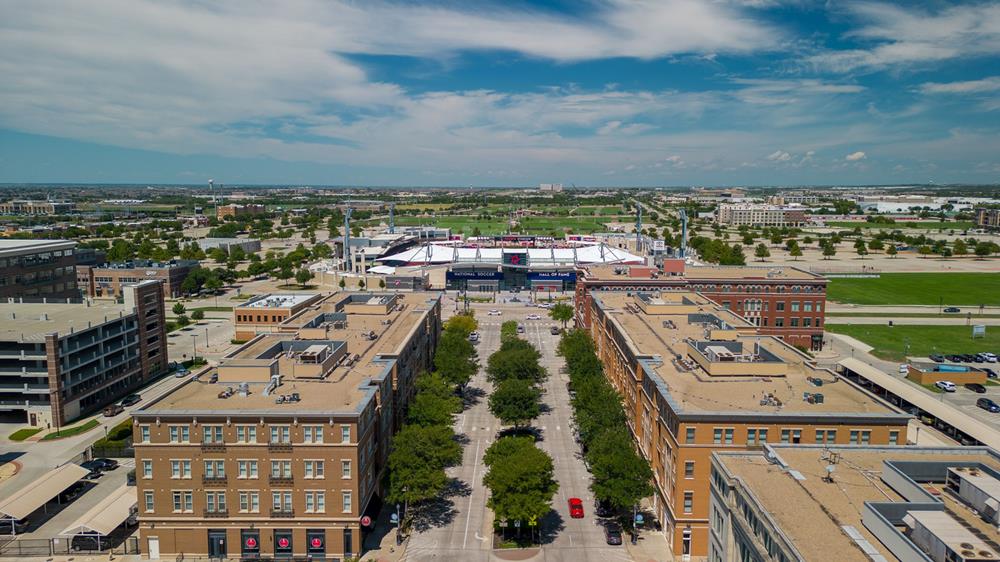Remote Work in Texas: Why More People Are Logging in from Scenic Towns

Texas suburbs are becoming remote-work hotspots, with towns like Frisco consistently ranking among the nation's leaders for at-home employment. Remote roles in metros such as Dallas–Fort Worth and Houston often pay more than many on-site positions because they cluster in higher-skill fields.
These areas offer strong digital infrastructure, abundant parks, and growing coworking options. Texas's lower cost of living further stretches a remote salary, creating notable wealth-building potential in these connected communities.
Texas Suburbs Leading the National Remote Work Revolution
https://www.youtube.com/watch?v=vOpTdfbjDwo
While many regions across America embrace remote work, Texas suburbs have emerged as top contenders in this shift. Frisco's share of work-from-home residents is well above the national average, with Allen and Plano also ranking high for remote-work friendliness.
These patterns aren't coincidental. Economic factors drive the trend, with remote roles in the Dallas–Fort Worth area commonly paying significantly more than comparable commuter jobs. You'll find a mix of high-speed internet, plentiful coworking, and safe neighborhoods supporting this lifestyle. Gigabit-class service in many suburbs enables seamless collaboration.
While most residents still rely on cars more than public transit, the combination of strong salaries and suburban affordability makes these communities hard to beat.
The Economic Advantage: Why Remote Workers Earn More in Texas
Texas remote workers enjoy an economic edge that goes beyond flexibility. In multiple metros, remote professionals often report higher median pay than daily commuters, reflecting the concentration of at-home roles in tech, finance, healthcare, and other knowledge sectors. Nationwide averages for remote-eligible occupations align with what Texans see: strong pay bands and benefits that outpace many traditional posts.
Your dollar goes further here, too. With Texas's overall costs running below many coastal markets, a competitive remote salary provides greater purchasing power. The takeaway: professionals in specialized fields frequently realize both income and cost-of-living advantages when based in Texas.
Natural Amenities Driving Remote Work Location Choices
Three quality-of-life factors keep drawing remote workers to towns like Plano and Sugar Land:
- Parks and trails—thousands of acres across North Texas and the Houston suburbs offer midday resets without long drives.
- Walkable districts near green space—areas around Oak Point Park or river and bayou trails pair convenience with stress reduction.
- Balance of nature and infrastructure—coworking sites near parks let you move from focus time to fresh air easily. Signature events (think the Plano Balloon Festival) build community while robust broadband and local safety keep workdays smooth.
Frisco's Rise as a Remote-Work Powerhouse

Frisco has become a standout for work-from-home adoption, with remote residents making up a large share of its workforce—multiples of the national rate. The Dallas metro pay premium for remote roles, combined with relative housing affordability compared with coastal hubs, fuels talent attraction.
Favorable amenities and schools add to the draw. Year-to-year fluctuations happen, but neighboring Allen and Plano likewise maintain strong concentrations of remote workers, cementing the region's digital-work reputation.
Digital Infrastructure Supporting the Work-From-Anywhere Movement
Texas's connectivity varies: urban and suburban corridors enjoy robust fiber and 5G, while some scenic rural areas still face coverage gaps. Electric cooperatives and public-private partnerships continue expanding fiber-to-the-home in the Hill Country and beyond, narrowing the divide.
As demand grows, so does pressure to extend high-capacity networks to underserved communities—critical for small businesses, home offices, and hybrid teams. Frisco and the broader DFW suburbs exemplify how strong infrastructure enables scalable remote work.
Housing Affordability and Space: The Suburban Remote Work Appeal

With reliable internet in place, the question becomes where to set up your home office. Despite tighter inventories since 2020, many North Texas suburbs still offer more square footage per dollar than central business districts, allowing a dedicated workspace without sacrificing living areas.
Local planning changes in several cities have encouraged smaller-lot and infill options, gradually broadening choices. Although mortgage rates remain elevated, remote work reduces the premium you'd otherwise pay to live close to a downtown office.
Recreation-Dependent Communities Seeing Remote Work Boom
Towns built around parks, lakes, and preserves are unexpected winners in the remote era. Sugar Land, with spaces like Cullinan Park, and Frisco, with extensive trail networks, appeal to professionals who want nature close to Zoom.
These shifts stabilize local economies beyond seasonal tourism. Coworking sites and library work lounges help fill infrastructure gaps, ensuring you can enjoy outdoor assets and reliable workplaces without a long commute.
Wealth-Building Opportunities in Texas Remote Work Hubs
Beyond lifestyle perks, the numbers matter. Remote hubs across Collin, Denton, Fort Bend, and nearby counties benefit from tech-enabled growth, diverse employer bases, and expanding professional networks. Your opportunities expand through:
- Access to high-growth jobs without geographic limits
- Lower everyday costs that support faster saving and investing
- Local economies diversifying beyond a single industry
- Employers eager to recruit Texas-based remote talent
As remote work matures, this mix of policy support, job creation, and digital infrastructure sets favorable conditions for long-term financial security.
Changing Demographics in Texas' Remote-Friendly Towns
Remote work has reshaped who lives where. Frisco, Allen, and Plano attract younger professionals and families in digital-economy roles, altering neighborhood demographics and spending patterns.
Many newcomers seek larger homes, outdoor space, and flexible rooms that double as offices—prioritizing everyday livability over proximity to a downtown tower. Texas continues to rank high for relocation interest among remote workers, reinforcing these suburban shifts.
How Coworking Spaces Are Reshaping Suburban Business Districts
Suburban coworking has surged since 2023, revitalizing shopping centers and mixed-use corridors. These spaces are more than desks:
- Work-retail-dining combinations that keep districts active throughout the day
- Community hubs for entrepreneurs and neighborhood networking
- Flexible terms that reduce vacancy and support hybrid teams
- Improved last-mile access that aligns with shorter suburban commutes
For many Texans, nearby coworking delivers the flexibility of remote work with the focus and community of an office—without the long drive downtown.




